Many thanks to SWLing Post contributor, Dan Robinson, for the following guest post and review:
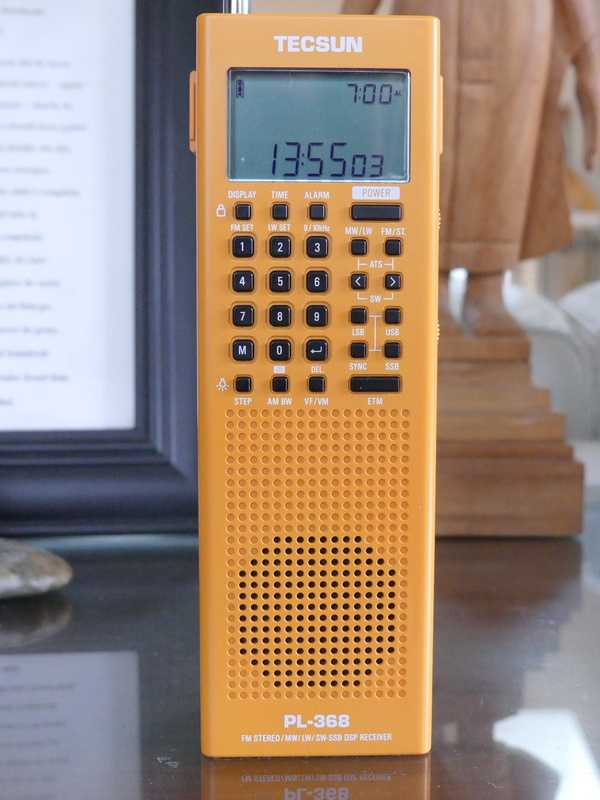 Tecsun PL-368: Large Receiver Features In Smaller Vertical Handheld
Tecsun PL-368: Large Receiver Features In Smaller Vertical Handheld
by Dan Robinson
It was back in 2020 that the first photos surfaced online of the PL-368 – posted on Facebook by someone attending the electronics fair in Shanghai, China.
Photos showed the successor to the PL-360/365 receivers – and also the PL-990, successor to the PL-880, as well as the new king of the hill for Tecsun, the larger dual speaker H-501.
Things looked promising, and it was pretty exciting. Tecsun designers upgraded the PL-365 which had become a favorite of preppers and SWLs, but which was hobbled by the lack of a keypad, to the re-named PL-368.
The PL-365 and PL-360 before it were plagued by the problem of being overly sensitive to the touch – when holding the radio, reception was fine, but remove your hand and signal levels plummeted. Usually, a full hand grip was necessary to obtain full sensitivity and any variation in grip reduced sensitivity – this was noticed mostly in shortwave mode.
Previous 360/365 models were known for the included small rotatable ferrite
AM amplified antenna which performed miracles in nulling mediumwave stations – for those who still like to listen to the AM band. The 368 also comes with this additional ferrite antenna.
And the 365/360 (which were and still are sold by CountyComm as the GP-5) used AA batteries, making it very easy to find replacements anywhere the radio is being used in the field. Tecsun changed that on the 368.
After the photos appeared, I contacted Benny Zhao, who had posted them on one of the Facebook groups and asked if he could send me a sample of the PL-368. He obliged and a 368 was sent on its way.
The radio was sent without the BL-5C flat lithium battery which was prohibited in postal shipments. It took a long, long time (3 months, apparently the package was sent by snail mail) but it finally arrived here and I have been putting it through some tests.
The PL-368 that I received has the notation “2020.12 VER 1” so it’s clearly a first version from 2020 production.
Like the models before it is a great, handy, portable to grab if you’re going on a trip. It is lighter than the older 360/365s. The change from three AA batteries to the flat BL-5C explains some of that. There is a heft to the older models that the 368 doesn’t have. I am not sure about differences in thickness of the 368 cabinet. Perhaps we will find out more from Tecsun (see notes below regarding issue of tapping the front of the 368 cabinet).
The 368 retains the two multi function adjustment wheels on the right side, one for Volume, the other for Tuning. These are also used for time and bandwidth control.
On the 360/365 radios, I never found the tuning wheel approach to be particularly efficient since it was limited to a certain number of kHz per turn, either 5 or 1 kHz depending how fast you turned.
On the 368 it appears you can obtain up to 40 kHz from a single turn of the wheel, while on the 360/365 that was limited to 15 to 20 kHz depending on the speed you were turning.
The antenna on the 368 is thinner, but 8 inches longer than the 360/365 models, and in the box you will find the included and very effective rotatable ferrite antenna for mediumwave that inserts in a jack on the top.
On the 368 the volume wheel has detents, whereas on the 360/365 the wheel had smooth turning.
We have gone from 14 buttons on the old PL-360/365 models to 28 buttons on the PL-368, including addition of the keypad.
UPGRADES
Tecsun has upgraded the 368 in line with improvements seen in the PL-990x and H-501 receivers. There are now adjustable bandwidths – a particularly useful tool. These bandwidths also operate in SSB, something that the new Sangean ATS-909×2 doesn’t offer. Bandwidths are: LW/MW 2.5, 3.5, 9.0 SW: 2.5, 3.5, and 5.0 SSB: 0.5, 1.2, 2.2, 3.0 and 4.0 kHz
Also in the 368 is now synchronous detection, a feature left off Sangean’s 909×2. And you get the same intelligent tuning features seen in the 909x/501x models as well as the previous PL-880.
Tecsun added a control that enables activation of the light – this is located on the same button as the Step control which adjusts the tuning steps.
The 368 display now has the ability to tune in 10 Hz increments, an overdue upgrade from the 360/365 models.
Charging of the BL-5C battery can be carried out by connecting a DC 5V/0.5A adapter to the micro-USB port on the side of the radio. The English manual notes that when charging, the charging time is displayed at the top right corner of the display while the “Charge” indicator flashes.
Adjustments for 9/10 kHz mediumwave, Longwave, and FM frequency range can be found on the 1, 2 and 3 keys.
The manual notes that in addition to the internal ferrite bar antenna, the external supplied MW/LW ferrite antenna can be connected to the antenna socket on top and rotated to obtain optimum reception.
Addition of the keypad makes the PL-368 far more useful than its predecessors for instantaneous frequency access. This was the major drawback of the 360 and 365 receivers. This can’t be emphasized enough.
This is a day versus night difference and vastly improves the attractiveness of the 368 over previous models.
There are 850 memory presets, 100 for FM/LW, 150 for MW, 300 for SW, and 100 each for SSB and SYNC.
ATS tuning, like the 990x and 501 receivers enables ATS within all meter bands by holding the [<] or within a selected meter band by holding the [>]. The manual also notes the ability to auto scan all stored stations within a frequency band or mode (SYNC/SSB) staying on each station for about 5 seconds before resuming.
The 368 has what Tecsun now calls Enhanced Tuning Mode (ETM+) – as explained in the manual, this allows auto tune and storing of FM, LW, MW and SW stations into ETM memory. Unlike ATS, scanned stations will not be stored into regular memory (VM) – in this way, when in a different city or country, ETM+ can be used to auto search new stations without overwriting any previously stored stations.
FM De-emphasis Time Constant – as explained in the manual, while receiving FM broadcasts, long pressing [4] will adjust the de-emphasis setting for Europe, Australia, Japan (and most other locations), or for Americas and South Korea.
Add Seconds to the Clock – with the device powered off, press and hold [8] to add seconds to the clock.
Sleep Timer – as with its predecessors, the 368 has a Sleep Timer, with an indicator on the LCD display.
Alarm – and like earlier models, there is also an Alarm function, which allows the radio to turn on at a preset time. It’s possible to select a specific frequency to be used with the Alarm.
RE-CALIBRATION – I have not been able to determine yet if the 368 has a re-calibration function as can be found on the PL-330, 909x, and H-501.
PROBLEMS
Let’s get one headline out to start: The 368, as with the 909x and H-501 all have the useful Synchronous Detection mode. However, SYNC continues to be hobbled, showing distortion and loss of lock.
As I have mentioned in reviews of the 330, 990x, and 501x any successful use of SYNC requires a delicate dance involving careful selection of various bandwidths while in SYNC mode and fine tuning.
The 368 manual contains 3 pages of explanation of SYNC noting that it can “eliminate distortion generated in the IF filter due to local fading, slight offset, modulation overshoot, as well as inter-channel interference and cross-talk modulation, and can also reduce noise interference.”
The problem with all of the Tecsun DSP chip receivers after the PL-880, which had a hidden SYNC feature that was the worst of the bunch, is the extent to which SYNC still suffers from distortion and loss of lock that renders the feature far less useful than it could be.
Ideally, one would want SYNC to match the capability achieved in such older receivers as SONY’s ICF-2010, SW-100S, SW-07, 7600GR. You’re not going to get that with Tecsun receivers.
Like its predecessors, the 368 is still sensitive to touch. I noticed this immediately on the old 360/365 receivers, especially when using the radios
at the beach. If I was recording a station on shortwave, and left for a few minutes, I would return to find that sensitivity had dropped because the radio was not still being held in the hand, which rendered the recording useless.
I am continuing testing of the 368 to try to determine if this issue has been reduced to any extent and will update this review with any further findings. This sensitivity issue is not specific to the 368 – it can be seen on other older and newer receivers.
Many older portables (the SONY ICF-SW55 comes to mind) were constructed with robust cabinets that were less sensitive to touch. Touching the whip antennas on some older receivers improved reception, while on others touching the whip antenna actually reduced sensitivity.
URGENT ATTENTION FOR TECSUN: My initial testing of this particular China market unit of the PL-368 – again, it is marked as December 2020 Version 1 production – identified an additional issue.
When in SSB modes or SYNC, tapping on any area of the keypad and LCD display produces a warbling/distortion effect in the audio. One can only surmise that this is attributable to insufficiently robust construction of the PCB board underneath.
(Video shows problem created when physically tapping front of PL-368 cabinet.)
This is NOT a problem seen with my PL-365 when it is in SSB mode.
I hope that Tecsun gives this the attention it needs and corrects the problem in future production runs.
SUMMARY
 Were it not for the major problems detailed above, the PL-368 would be an automatic must-buy receiver in my book.
Were it not for the major problems detailed above, the PL-368 would be an automatic must-buy receiver in my book.
Addition of the keypad is a night and day improvement and when combined with additional features such as multi-bandwidth options and the still-to-be-perfected synchronous detection, the 368 would be a killer portable.
But as with the PL-330, 909x and 501x the problem with SYNC mode is still a major drawback on a feature that is supposed to lift Tecsun receivers out of the pack of portables that are on the market in 2021.
One can live with the issue of cabinet sensitivity – but the additional issue I identified where there is instability introduced when tapping on the front panel/keypad/LCD is a QC problem that simply must be addressed by Tecsun.
But as I have said in reviews of other Tecsun receivers, let’s back up a bit. Imagine if we had had portable receivers with the capabilities that these have, back in the 1960’s or 1970’s.
It’s one of the great ironies of the radio listening hobby, that in 2021 any company is willing to continue producing receivers of this caliber as use of shortwave by major broadcasters continues to decline.
The obvious other killer feature to include in portables such as this would be to somehow integrate DRM into them. However, I have a feeling that will never happen

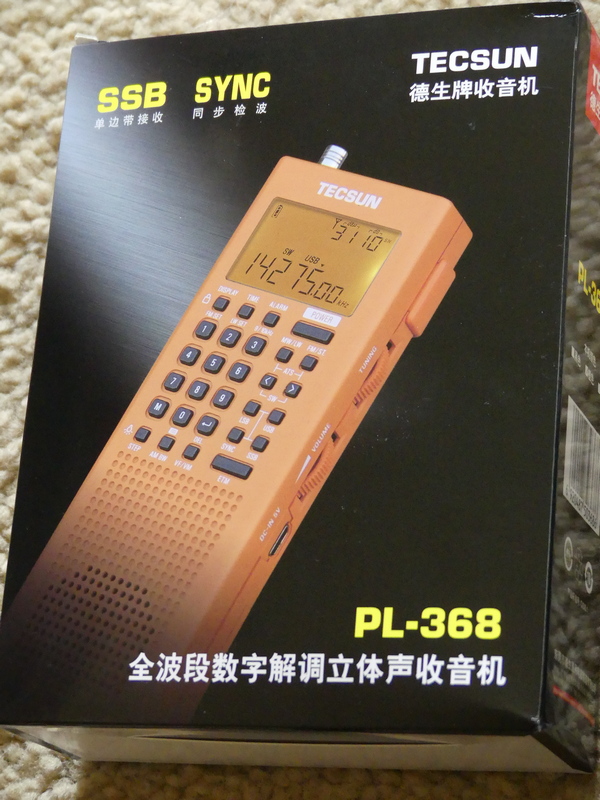
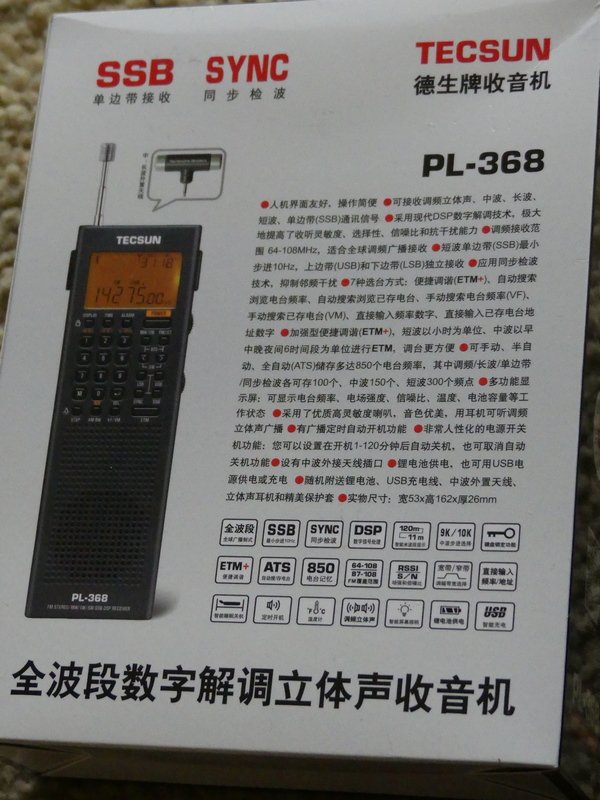
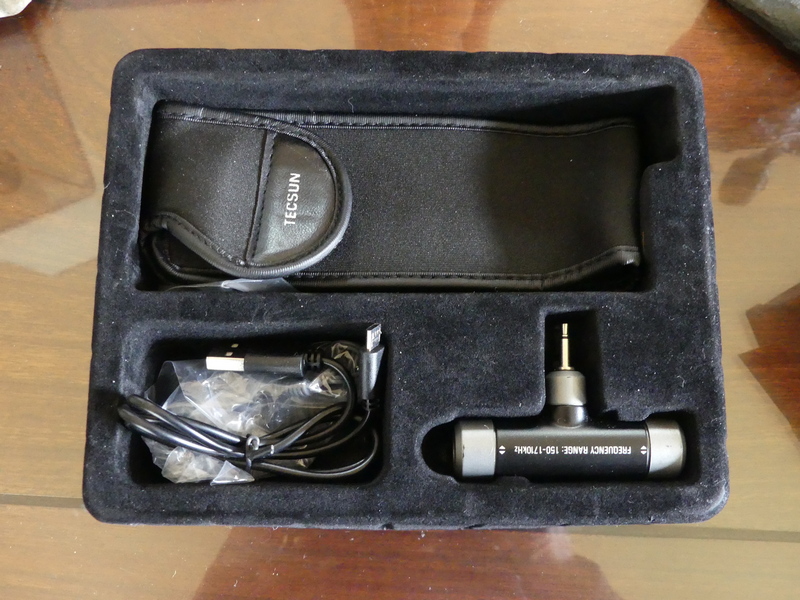
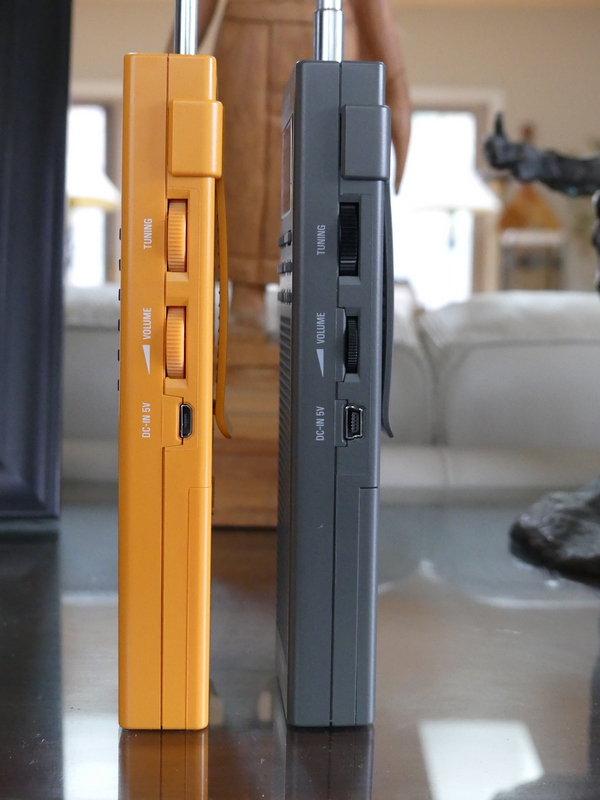
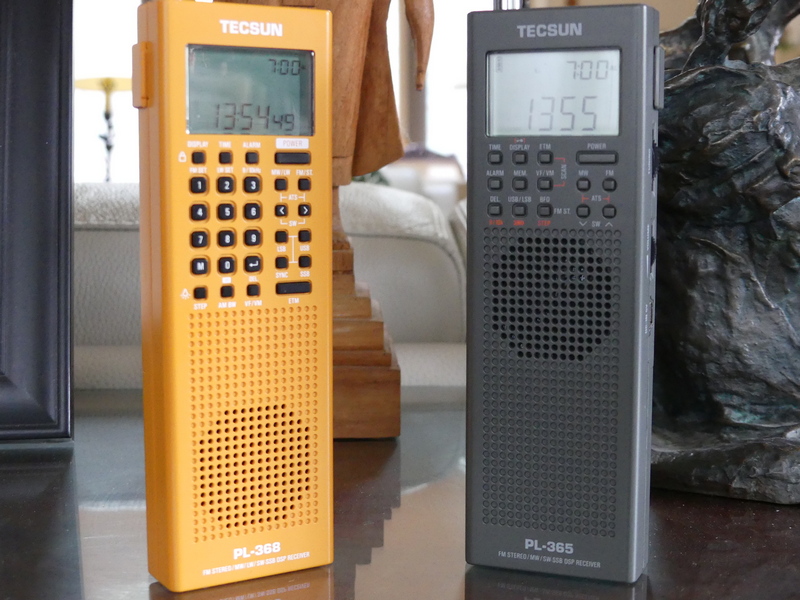
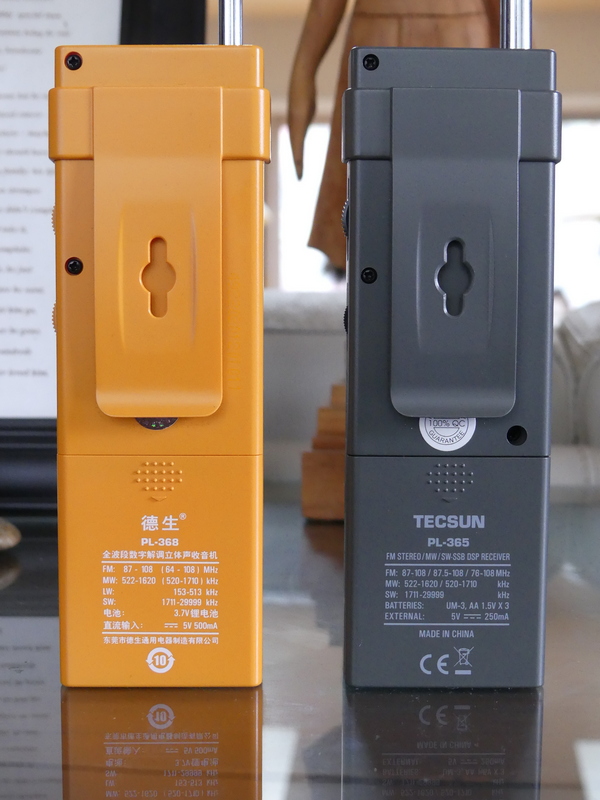
What does holding down the 9 button while powered down do? I could not find in the manual. Kaito didn’t know, either. It switches from ON to Off.
It’s 2022 and i have the US one.
Dan, This radio is one of the best ‘to-go’ but if you scan -you are still the antenna. kinda of, unless you scan while away from the radio.
Now i understand the problem you had with it being in the front of the radio.
Mine is trod the bottom.
Do you think the new battery might be an issue?
Hello:
I currently own the PL-365 and was considering up grading to the PL-368.
I read the various reviews and was wondering when there will be an upgrade to the Software Version to address some of the problems with the current of Version 1. and provide a Manual in English.
I’ve had my PL 368 a couple of months now and I’m very happy with it, I don’t have any of the problems mentioned in the review.
The battery was already installed, so I can only assume that the Chinese retailer on EBay had been good enough to check the radio out for glitches before he shipped it to me here in England.
Apologies, this is a rather lengthy post: The hand capacitance/microphonics that seem common to these plastic cased models is probably due to a couple of things. One has been mentioned already, the lack of structural strength/integrity in the plastic casing means the case may warp under hand pressure (even a tiny amount of flex could cause the PCB and associated components to shift position. This could alter the physical properties of inductors and change inter-component or inter-stage coupling capacitances, etc.
The other thing that could be amiss is internal shielding. They may be using plastic coated with a conducting spray, rather than a solid metal shield or box to house critical components. The person holding the radio is becoming the missing part of the antenna system (i.e. ground or counterpoise). I prefer the look of the previous iteration of the radio when it was dark grey/black plastic with contrasting side controls.
The darker material and 2-tone appearance of the 365 makes it look more ‘professional’ and less like a toy. I don’t know if anyone else feels that the orange casing and controls make this Tecsun look like an expensive toy.
I have not handled either of these sets so can only give a speculative view, but maybe they have added much-needed features and offset the cost of that by reducing the quality of the casing and internal mounts, etc.
I wonder if you would get the same sensitivity (were there stability/oscillation issues too?) problems if you wrapped various parts of the case in kitchen foil? Not a solution, as you wouldn’t be able to use the radio very easily especially if the keyboard and side controls were covered in foil! I had to foil wrap the internal casing of one of my PC monitors in foil to reduce the spurious emissions radiating from it and into my SW gear,
I agree about the inclusion of a DRM decoder, all of these manufacturers have missed a big trick there. DRM should have taken off, after all the tx technology has been around for years and was used a fair bit in the earlier days. Now, of course, there is not much in the way of DRM simply because the potential audience has no way of receiving it. It’s not particularly easy to get hold of a consumer DRM receiver over here, and never has been.
I listen to DRM in the same manner as most of us techie types – with a PC, SDR and Dream (or other) software. Bit of pfaff to get going, especially if you have the wrong dll installed on your PC (I think it is a particular version of the ‘lame’ you need otherwise you get no audio out of ‘Dream’).
The next innovation for full-size portable/desktop radios should be to incorporate some kind of anti-noise phasing device (it could use a secondary telescopic antenna with variable attenuation, for instance). By incorporating something like this, you might be able to reduce whatever local noise is plaguing reception.
I am currently using a phaser designed by a Polish ham purchased as a kit (btw, this kit contains everything, including the case) from eBay and it works surprisingly well.
Because you can vary the phase of the signals being received by both antennas individually, the signal can be steered away (nulled) or combined (peaked). The phaser I use is produced by ‘Raduso’ and the kit is of very high quality. Similar design to the various Chinese ones (X-Phaser), but with ‘proper’ through-board components, rather than tiny SMD ones, meaning even I was able to construct the phaser with no real issues (apart from winding the toroid which tested my lack of manual dexterity to the limit – 40 turns, 7 of which are bifilar, on a half-inch toroid (in my case I chose a #77 mix over the standard #43 mix toroid (which is offered as an option when you check out)) so the kit would be more effective down the low end of the spectrum).
I don’t know how much this would add to the cost of a SW radio, but it would make the radio an infinitely more useful thing if it were included. As my kit was the equivalent of about $60, it should only cost a few dollars in components, especially with the amount that Tecsun, etc. would use.
Because this feature would likely be available only for high-end portables, an additional $50 or so wouldn’t price it out of the market and would allow for a decent mark up over cost etc.
73 and good DX
Sean (G4UCJ)
International Editor – WRTH
Thanks for this information and you are right about the PCB issue. One correction, which I should have mentioned: the 368 does, in fact, come in the darker cabinet color.
Thanks, Dan. I would imagine it looks a lot better with the darker colour scheme. Having customisable DSP bandwidths is a definite bonus. A pity they couldn’t allow the narrowest SSB filter to go down to 250Hz, rather than 500Hz, which would make it really good for CW and beacons on crowded bands. 500Hz can be too wide when there are many signals in close proximity, but I would imagine the target consumer is not likely to be overly worried about that. I’m being ultra picky of course. To even get a proper 500Hz filter in a radio of this price point is a real bonus – usually, we have to make do with whatever SSB filtering is offered (3+kHz is not uncommon, but is no good for CW and even a bit wide for SSB). If they can sort the physical issues, they will be on to a winner, in my opinion. 73
UPDATE: Thanks for Anon-co for additional information. The 2020.12 VER 1 I mention being printed on the box may, in fact, not refer to the version of the radio. According to Anon-Co this may be for Tecsun internal reference and refer to the design date of the box itself. Anon-Co also advises that determining the age of a radio is best done by looking at the serial number on the plastic cabinet but “even this is not fully accurate, because the date that Tecsun ordered the plastic (and when the serial number is lasered on it) and the actual production date of the radio are not always the same.” Anyway, always new information to add and I hope to learn more as time goes on.
After the photo under neath the heading “upgrades” I had to stop reading and come to post a comment.
No 1620-1711KHz coverage in 9KHz kills it for me and means I wouldn’t buy this radio. The frequency where the ferrite would be most effective (1629) wouldn’t be available to me unless I switched to 10KHz and used 1KHz tuning down, or used the keypad, but even if you did use the keypad, you will still have to switch into 10KHz tuning every time you wanted to listen to the extended AM band, and then switch back to 9KHz after.
Lot of extra effort there.
Dan,
If you could only keep this or the pl-330 which would you choose?
I’m glad they changed the antenna from previous models. I found it ungainly (no pun intended)
Answer: I would keep the the PL-330 because it does not have the body sensitivity of the PL-360xxx series. SYNC is a pain, but one can get used to the tuning knob being so difficult for rapid turning, and the bandwidths are just as good in all modes.
…if you had to chose, which to keep? …Realistic DX-440 or the Tecsun pl368?
Dave Zantow reminds me of the term I was searching for in describing the problem that is obvious when tapping the cabinet of this receiver: microphonics. And I’ll just reiterate that this is something Tecsun really needs to fix in current and future production — it’s just not right for any radio to exhibit this kind of behavior, though most if not all of those 368 owners who posted videos about the receiver failed to mention this.
Your closing sentence is poignant. Without DRM , future of broadcasting on SW becomes less and less desirable. Never understand why somebody like Tecsun does not include DRM by default or why Gospell can make great DRM receivers but relatively poor SW radios.
They may do someday, but for now it’s kind of an ironic catch 22. If you are in a part of the world where shortwave is in heavy decline, you are much more likely to have access to a smartphone, and therefore even if you are in poverty, access to millions of internet streams of radio stations all over the world. Data costs, even for those in poverty, are so low that even in first world nations like Australia, ownership of smartphones with data plans is almost ubiquitous amongst the homeless (in the 99% range), not that listening to radio stations on the other side of the world would be high on your list of priorities but anyway I digress…
If you are in a part of the world where radio is still critically important, and stepping away from the usual suspects (like Africa) lets take the pacific islands as an example, then battery life is going to be far more important, as is your access to batteries or in the case of rechargeable batteries (whether it be AAs or lithium replacements such as BL-5C or 18650 cells) an ability to charge them.
If you are someone who is visiting or has recently migrated from another nation, you might have solar panels for this purpose, but if you’ve lived in the islands all your life, how are you going to get access to this tech?
Not to mention, how are you going to fund upgrades to new radios? There are a lot of radios that are older than the locals using them in many of these communities.
When I see footage on areas of the world where radio is still king and internet streaming doesn’t matter (or is inaccessible) you never see them holding a brand new high end tecsun model.
It will be a long time before DRM reaches that part of the world, with the notable exception of India, which has heavily embraced DRM but if you are in poverty or someone moving to a non connected part of that country, at least you stand more chance of getting access to a radio and a means of powering it.
Putting DRM into low end smartphones should be another focus area – not just building cheaper DRM receivers. For the international broadcasters that are leaving SW, they are more shutting down rather than moving to DRM anyway.
Until the USA (and allies) start world war 3 with China, Russia and North Korea and the internet becomes largely unavailable, I doubt we will see a resurgence of broadcasters heading into DRM
“ Until the USA (and allies) start world war 3 with China, Russia and North Korea and the internet becomes largely unavailable, I doubt we will see a resurgence of broadcasters heading into DRM.”
Ignoring the fact that the next World War like the previous 2 will be something that the US gets dragged into, you can bet everything you own that SW/DRM is not going to suddenly surge in use.
Where are these broadcasters going to get the equipment, labor, and expertise to restart SW broadcasting or adding DRM service?
Where are the potential listeners going to get SW radios from?
Literally everything needed would be made in China or in territory China would control during any conflict.
The West is in too deep when it comes to relying on China for nearly everything manufactured, grown, or produced.
China knows this and also knows that continued unrest in the US means that now is their time to act if they want to take back Taiwan or whatever the hell else it wants.